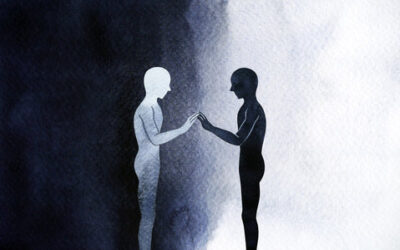Podcast: Play in new window | Download (Duration: 35:28 — 24.5MB)
Subscribe: Apple Podcasts | Spotify | Amazon Music
Dismissing/Avoidant Styles of Relating in Adulthood
Today's subject, Dismissing/Avoidant Style of Relating is an important part of our work – and goes with the next two episodes, 59, 60 and 61 hang together. Sometimes you feel secure but really have just learned to cut off from important life-giving emotions. This episode is especially for those “talk to the hand” kind of people or those that love them. You know, the uber-independent, rational, left-brain, excel spreadsheet person that sees others emotions as needy and weak. Co-hosts Sue Marriott LCSW, CGP and Ann Kelley PhD translate decades of research and clinical experience into easy to understand usable points to help you improve your understanding of why people appear so irrational at times. They talk about how internal working models of the world are formed outside of our awareness in our early life and how they get passed forward over time, sometimes causing relationship trouble. Early stress responses and relationships create a pathway, and how we talk not what we say are clues to which pathway we may be on. This episode specifically focuses on the blue side of the spectrum, which you may be familiar from research as Dismissive or Avoidant. Hosts also discuss how an individual can move towards the secure middle of the spectrum and why it is important to integrate logic with emotion.
0:00-10:00 : Attachment overview, internal working models, and how attachment styles are developed
10:00-20:00: What does insecure avoidant look like, stress responses, handling dismissive attachment as the partner and as the individual with dismisive attachment
20:00-30:00: Deactivated attachment system
30:00-40:00: More on what to do to move from dismissive to secure
Sue Marriott: Welcome to Therapist Uncensored, a podcast where therapists freely speak their minds about real life matters.
Ann Kelley: Welcome to Therapist Uncensored. I'm Ann Kelley
Sue Marriott: and I'm Sue Marriott. And it's really great to be sitting back with just the two of us, because this is a format where we go back and forth, where we bring amazing and awesome and incredible guests, but also sometimes we talk among ourselves to sort of pull apart the ideas of interpersonal neurobiology and attachment and relationships, and really try to delve into what makes for healthy connections with yourself and those closest to you.
Ann Kelley: Right, and because we both have such a passion for this, that's kind of the, the core of bringing us to this podcast. So it's kind of fun just to be back here in the studio with just you.
Sue Marriott: That's exactly right. So what we decided to do is we want to go back and do a real here's the basics. For those of you who are new to the podcast or who would like to be reminded, we're going to really delve into one particular topic today in order to both refresh people's minds, but also to go deeper than what we have before this topic in particular is dismissive attachment.
Ann Kelley: So we've talked off and on, in different podcasts about attachment and we've referenced dismissive attachment, secure attachment, anxious, preoccupied attachment, and we've even done one on disorganized, but we've not done an entire podcast. On the particular subtypes. So we decided that it might be really helpful just so that you can drop down and get really well informed about a particular
Ann Kelley: one.
Sue Marriott: So for those that relate more, we've talked before, again about the spectrum of attachment. So this is a reminder for frequent listeners, but for our new listeners, The idea is very simple that if you think of a spectrum and on the left side is blue on the middle is green and on the right is red and the blue corresponds to cooling off deactivation.
Sue Marriott: Zipping up being super independent for. So for those of you like me, I'm in recovery from that particular side that relate more to that. This is for you, but also many of you have relationships with people that tend to be super independent. They look like there's nothing wrong. They look like they don't need anything, but we have some news for you.
Sue Marriott: So that's what this is for. Going back to the spectrum, the middle of green, which is a really nice integrated balance. And then the right side is red, which is the more preoccupied, anxious attachment status. And we will do that on another podcast
Ann Kelley: So stay tuned next week, I think for that one
Sue Marriott: that's right. So, how do you want to start?
Ann Kelley: Well, maybe we should start for brand new listeners about just a very, very brief summary of what do we mean about attachment? We're talking about green. We're talking about blue, but what we're talking about is internal working models or categories of attachment. And let's start by talking about how does this originate, how do we sort of form our internal working models
Sue Marriott: also, by the way you guys, we are about to launch. Finally our video and it's going to go into this in more detail. And so you'll find that on our show notes, but the brief version is that we're born with basically we're born with our midbrain only. And. We are dependent on our bigger wiser others, generally it's moms dads most often. Yeah. So there's a primary person that their brain manages our tiny little brain as it develops.
Sue Marriott: And if all goes , and our parent's brain was also managed when they were little bitty and we can run it up the line then without even thinking about it, everything goes well. And we develop a really healthy, balanced attachment system.
Ann Kelley: Right. And that's what we call secure attachment and it's, and it's because we are completely 100% dependent on survival on this primary person. So we learn how to communicate. They learn how to communicate to us to make it work. It's a dance and when we're in sync, it goes really well. And the outcome of that is how we see the world and ourselves in the world. And so the relationship that first primary relationship that we have actually sets a blueprint, if you will, for our future relationships and how we expect to be taken care of whether others can take care of us, whether we can take care of ourselves.
Sue Marriott: And it really literally is a blueprint so that we begin to have these lenses on. And if we have had to adapt, because we didn't have consistent, accurate attunement, and there are some key factors, things like protection and attunement and soothing, and people being delighted to have us as children and folks that are also able to help us develop ourselves and not just make us develop in their image.
Sue Marriott: That's what security looks like. But when any of that is off for any reason, whether it be stress or depression or their own attachment histories, then we have to figure out how to stay safe. So this from an organized system, you're either secure or you end up universally kind of going into two sides. You either go into the blues, what we're calling the blue side, which is. Are more avoidant of relationships and we think more than we feel we're less focused on relationships and we're more focused on ourselves. That's a, that's a rough way to say it well,
Ann Kelley: and let's talk about how we get that way. So as infants, we're going to be talking quite a bit about elements that have been shown in research. So as infants, what we anticipate and what we really need is to feel when we are distressed and in need that the person that primarily is taking care of us can handle that, is in tuned to us and wants to take care of us. But like you said, Sue, for all sorts of. Sometimes that doesn't happen. And because we may, as parents have depression, we may, as parents have a history of not being nurtured ourselves. And so for instance, not being comfortable with negative emotions, that's a big impact from a parent to an infant. When the infant cries, if the parent can't attune to that in, in feel safe in that and gets completely wigged out themselves, that's going to send a message to the infant that their negative emotions is completely overwhelmed.
Sue Marriott: I really am glad you're kind of already, uh, pinpointing that because for on the blue side, on the dismissive side, frequently, according to the research, there's often histories of rejection, particularly related to negative emotions. And it's interesting because there's like this selective sensitivity of the parents. So if you're playing and you're happy, then you're connected. If you are exploring and exploring the world. That's good. But if you are needy dependence, snotty, um, kind of sound like that angry, right? Some of the healthy, normal ex uh, experiences because the, our parents may have had to shut that down in themselves that they aren't as good at, as a matter of fact, they're particularly bad at responding to the that if you think of emotions as a keyboard, it's like those deeper, darker notes push the parent away and we learn that really quickly. And so we learned to bypass those fields.
Ann Kelley: Yeah, we learned that to have those being that snotty crying kid,
Sue Marriott: by the way, we're pro snot
Ann Kelley: may actually deactivate your parent from being there. And, and infants are just so sensitive and aware and they develop a process of going wait, that pushes my mom, my caregiver away. So what. Uh, you know, when we use the word deactivated being distressed is not something that gets rewarded. In fact,
Ann Kelley: It's not a good idea, yeah
Ann Kelley: It shuts your parent down. You really learn. That's not really a great idea for your survival. So you actually start developing the processes in your own brain that says intense emotions
Sue Marriott: Don't need.
Ann Kelley: Intense emotions are not safe. Needing and being dependent is not a good idea because this person goes away from me. And if I'm more secure, if I'm out playing, look how rewarded I get..
Sue Marriott: That's right. And you know what, the tricky part of this is any of you that are listening, that kind of lean towards blue won't necessarily immediately identify with what we're talking about. And what's so interesting about this is because that this works so effectively that when we're on the blue side, we really don't know that we're missing anything.
Sue Marriott: We think everything's okay. So you're just going to have to trust us that if you're getting hassled in your relationships, or if you're more isolated or more alone, this is a really great thing to explore. The research says that there's high maternal rejection, particularly of negative affect. Cuddling is rare.
Ann Kelley: Are you talking about between the infant and the mother that helps develop this?
Sue Marriott: Thank you. Yes. And as a matter of fact, that if we are more needy, like you're saying in that we get pushed away rather than held and comforted. So we end up bypassing that and most people can identify. If you're on the blue side, you know, the John Wayne figure you really highly value independence.
Sue Marriott: You're zipped up. You keep things to yourself and it feels pretty good with some big asterisks and exceptions. That's the image in general that we're talking about and we want to help you understand sort of what's wrong with that. If that makes sense.
Ann Kelley: Right. And what you're saying, Sue, makes so much sense that it can come across as in fact, individuals that tend to lean on the dismissive side, come across super confident in themselves and one of the ways, so how would, you know, because a secure person can come across as super confident. So what's the difference in those two? And I'd say one of the, the confidence is that you feel. That you've got a lot of security in the world and you can't understand why everybody else seems a little clingy, independence and really good
Sue Marriott: What is wrong with those people?
Ann Kelley: And a really good sign that you or someone you love might fall in more of a dismissive blue side, blue side, a blue side. Is that think about the idea of asking for help emotionally?
Ann Kelley: Is that something that just kind of just kind of scares the hell out of you or you kind of see it as a necessary. So, and if you could think about it in our culture, we can get a lot of positives about being independent and not needing somebody and not being, you know, vulnerable. But the, the idea of being able to be connected to your own vulnerability and it being safe to be with somebody in it rather than. And one of the ways to tell us what happens when you get really distressed as secure individual is more likely to turn towards another human in terms of a relationship to help you sooth. Somebody in the blue might be more likely on a regular basis to turn out, to do activities, to move away from relationships.
Sue Marriott: To drink, to smoke, to eat. There's a lot of externalizing and sort of more acting out in order to regulate.
Ann Kelley: Right? Right. Even biking and excess excessive exercising, alone. Not that that's not good, but it's, it's actually, when you're upset, do you lean out and you do these activities and that can be a good way to handle being upset, but it's also a way to bypass, needing a relationship. So now you come back and you're completely zipped up. I don't need you. I don't need you. I've got it. I've taken care of myself.
Sue Marriott: And some of the research talks about in particular kids that have parents that lean towards the blue and the literally physically their facial expressions are inhibited. So they're less emotionally expressive than even other kids in insecure categories.
Sue Marriott: Like kids with parents that are disorganized or kids or with parents that are preoccupied are more visually transparent. They show what they're feeling. But in particular, on the blue side, on the dismissive side, we learned to zip up and kind of shut down visually as a here's the coolest part of this whole thing. Is that what it looks like is either, oh, those are really good kids. They never cry. That's that's a misnomer. Or it also looks like, oh, that child has shut down their need for people. So as mom leaves, they're going to play their xylophone. As mom comes back, they're going to still play their xylophone, and they don't need anything, but that's actually really wrong. what the research shows is that those kids need connection.
Sue Marriott: So I will say those of us who lean blue need connection, just like anybody else. And, but what we'll do is we'll back into it. When you really closely observe infants or toddlers that have parents that have had to shut down themselves, what you see is they don't directly approach the parents. But what they'll do is they will have their back to the parent, but also still maintain some closeness and they figure out how close to get before the parent pushes away.
Sue Marriott: So there still is proximity seeking. There still is a desire to be close to the parent, but they've learned to kind of hide it in order to maintain closeness. So I think that's actually really cool. So it shows that even though we're zipped up, it's not that we don't need people. It's that we've learned that by being zipped up, it's the way that we can get close to people.
Ann Kelley: Yeah. That's exactly how it comes across as, as you develop as a child and then oftentimes, somebody that has full blown and developed in a more internal working model that solidly blue, you might not even recognize that you're distressed, that it does become difficult. It's not even that. Oh, I'm distressed, but I can't show it.
Ann Kelley: There is an overemphasis on, like you were saying earlier on the intellect and the high avoidance of the negative. So you see an intellectual functioning. Any activity that you can do to basically disconnect from the more feeling state that might come with that, including what you see in couples is somebody who wants to avoid their partner when their is negative and have a high emphasis on maintaining their happiness. And so oftentimes you'll hear, I can never make you happy as if,
Sue Marriott: if you were happy, we would be fine.
Ann Kelley: Yes. If you would just be happy, we would be fine. No matter what I do, you're always unhappy with the emphasis on doing.
Sue Marriott: That's right. And there's also, and why we're spelling this out is because we really want to get to what to do about it. So if we see relationships as less as important, and we see ourselves managing ourselves as more important than where we want to swim, what we call it sort of swim towards the green. And we want to begin to move towards the green looks like that we need to be a little bit more curious about how we're doing in the world with our people around us. So if you have someone who's complaining that you're not open, you might listen a little more closely and you might like, we want to increase your curiosity about your own personal attachment history, your current relationships. We want to move you into a, more of an interpersonal realm. Like we know you're independent. We know you can take care of yourself. That's awesome. And that's great, but what's missing a little bit is your ability to need other people and to be connected to other.
Ann Kelley: And that ability to need and be connected as essential because that's what makes us feel valuable in a relationship. And so if you're the one always doing the caretaking and can't tolerate being caretaking, that's a real sign that you probably are falling on the blue side, and I want to respond to something that you just said,
Sue Marriott: are you going to say, it's awesome.
Ann Kelley: You were so articulate and brilliant as usual. We are trying to encourage what to do about it, but I'm going to throw a little caveat and that is what's going to make it difficult for you to possibly listen to what we're saying?
Sue Marriott: If you're eye rolling right now. I think you're a little blue
Ann Kelley: if you're eye-rolling through it all and because of your reliance on logic and you do know you need people. I mean, but what we end up on the blue side overemphasizing. Is a little bit of morality and doing the right thing and integrity. And because of that, it's a high likelihood you can fall in defensiveness. So when your partner, whether your partner is secure or starts to say, you let me down, you didn't do this. You need to do this. You need to look at yourself. Your instinct might be to defend. To stop and protect because it's a threat to you to be questioned and to think something's wrong with you. And so, while we're saying, Hey, if you're getting these signs from your partner, listen, it also might be challenging for you to listen because in order to do that, you have to accept that you have vulnerabilities and you have to accept that you have insecurities. And for someone to mention that you have some insecurities, that might be a little threatening.
Sue Marriott: Yeah, it might be actually really threatening. One of the ways we've been able to be safe in the world is by going around that. You know, how we talk about it is that on the blue side, we're more intellectually oriented and it's more cognitive or more thinking. And then on the red side, it's more feeling with less thinking. So sometimes it looks pretty wild, but where we're want to, again, move towards is an integration. So if you're too intellectual and rational. If anybody's ever called you Spock, then again, that's a clue. And what we want to move towards is get you interested in feelings and non rational fantasies, experiences in your body, and what's happening in your body.
Sue Marriott: We want to get you more connected. Like in the Wizard of Oz, you would be the tin man who's looking for his heart and we want to get you more connected and open in your heart and in your needs. And again, what Ann's saying is that you might be reactive to this or try to again, dismiss it and say that it's not important or move away from it in some way, just say like, yep, got that done that, you know, had a happy childhood I'm finished with that. Like, those are all ways to deactivate, curiosity and openness and connection, but we don't know it when we're in it.
Ann Kelley: Right. We don't know that we don't find the curiosity are these there's self curiosity is a little bit threatening.
Sue Marriott: That's right. So look for dependency. It actually ends up. And again, first person experience. I'm definitely the caregiver, which is a weird way of being a little pushing away of relationships. But when we can relax our little rear ends and let people bring us things and take care of us and attend and attend to us, it ends up feeling pretty good.
Sue Marriott: So this isn't bad news for you guys over on the blue side. It's actually good news if we can help you with it, the downside is we don't go from blue to green. In other words, we don't go from dismissiveness to security because we don't have practice in that of the balance. What often will happen if we begin to activate our attachment, because see our attachment system has been deactivated.
Ann Kelley: So let's say what we mean by that. The attachment system being deactivated. What we mean is that the idea of needing a relationship in an interdependent way has become too threatening so that you become more of a singular system and that you can self survive. It's like I got it. I can take care of myself. If that's your biggest goal. In fact, the biggest fear of a dismissive personality is a loss of self. And so to fear the loss of self to become interdependent could create an anxiety in you, because that would mean that you couldn't just rely on yourself. You would actually need others. And that can be very scary.
Sue Marriott: I was thinking of Fonzie . That ages us. Any of you who know that reference, then you know, I'm fist bumping you right now, but right. So it's the leather jacket. It's the I'm good on my own. It's the island.
Ann Kelley: You were saying that you in kind of deciding, Hey, maybe I want to really work on not staying over there in the blue side, what you're saying is we need to activate our needs and activate our desire for interrelationship. What that may end up inducing in you is like, oh my God. I do have needs. And if you start opening that up, you might experience a little vulnerability in tapping into that.
Sue Marriott: She's too nice. If you already are over the blue, this is I think how it sounds
Ann Kelley: okay. Go for it.
Sue Marriott: You're sweet. But I think it sounds like, wait, hold on. It's like, you're like, oh, you might feel a little vulnerability. I think that instead of feeling vulnerability, it's like, well, that's ridiculous. You know, like th the first thing that gets activated is a avoidance or push away. The whole conversation is stupid and look at those needy people. And, you know, with people that I work with, you know, we call it the V word - vulnerability, and we all shutter. It's like, oh, blah, it's awful.
Ann Kelley: And often the reason that someone comes to us, In that case is because their partner or somebody they love is saying, you're going to have to activate that feeling part of you. So you have that extra resistance.
Sue Marriott: So I'm, I'm teasing you about being too nice, but it's, it's partly like our egg has to be cracked. And that, because it's only through really feeling some distress that we want to work on this, but I promise you that the world is actually more colorful and safe and holding. What I think what I was saying though, is. And I appreciate you making me make it more clear as far as the deactivation part, but when we've bypassed our needs, right. That we've got to go back and get our needs, but then they're going to feel like a tsunami
Ann Kelley: a little flooded
Sue Marriott: right. Which is why we dismiss them to begin with, which is why we're like, that is so stupid, you know, needy gross, blah. The truth is that if we can get ourselves, if we can wade in and begin to get a little not know everything, a little feel our dependency, feel our need for other people and tolerate it,
Ann Kelley: tolerate that we're not confident in everything which keeps us blocked from our vulnerability.
Sue Marriott: Exactly. So typically we'll go from blue to red, to green, and we don't go from blue to green typically. So those of you that again, are identifying with any of this or that you're in a relationship or have a child or parent or whoever that you're seeing them in this. Part of why it's so threatening to move is because we don't have the practice inside our bodies of regulating emotion and our little amygdala will freak out.
Ann Kelley: You don't even have the practice of feeling them. So, yeah.
Sue Marriott: Right. That's right. So that's why we think of it as bad. And that's also why we're rejecting when people are needy. We end up repeating the same pattern because we've had to bypass it in ourselves.
Ann Kelley: Which is one reason why, when you said earlier that you're going to eyeroll, it's one reason for the eye roll or the critical illness of individuals, you might experience the eye roll because it's bringing up either you're seeing vulnerability in other people and oh my God, while you're doing that, or it's activating something in you. And so that eye roll is to go, why do we need to do this? So it's a dismissive reaction to the other person, but it's in order to avoid whatever feeling is actually coming up in you.
Sue Marriott: That's right. If you're actually in the green and somebody is trying to approach you interpersonally, it's less threatening. And so if you're in a relationship with someone that is blue, you often will feel just like Ann's saying that you might get the eye roll or. You might feel silly or stupid for your emotional needs, but I want to tell you you're not.
Sue Marriott: And the person who you're trying to reach needs you to keep trying and maybe to learn the art of seduction. You don't want to yell at them like Come to dinner!!. You know what I mean? Because that's jarring because they're in a, what we call an autoregulatory state, which basically means they're taking care of themselves or not in a interpersonal state and all of a sudden they're poked.
Sue Marriott: You know what I mean? And it it's very aversive. So instead, it's like, you want to maybe walk into the room and touch them and be like, can I talk to you? And dinner's going to be ready soon. When do you think you'll be ready to wrap up on that computer there. You learn the art of seduction. You don't give up, but you also know that normal interpersonal relating might feel like an invasion.
Ann Kelley: That's so important. And to know, to recognize that that feeling of invasion isn't about you, isn't about you being too much, because it's really easy, especially if you're in a romantic relationship with somebody that's being dismissive towards you to think that you aren't worthy, or that they don't want you. Rather than recognizing that their system, I love how you just put it sue, is so autoregulated, so independent that somebody coming into that system actually throws the system off. So it may engage in a negative, get away from me. Cause their whole system just got overwhelmed.
Sue Marriott: Yeah. This kind of jarring. And what health looks like and what the green looks like.
Ann Kelley: The secure.
Sue Marriott: That's right. We want to keep moving towards that. That's what this whole point is, is that you're able to be alone and independent perfectly well, but you're also able to flexibly roll into more of an interpersonal connected realm. And then when that, you know, when there's a parting or a separation, you're then back to being okay in an independent way. And so that's what it looks like. In particular one of the signs like this is what to do. If you find yourself in the blue. One of the things that you may tend to do is have an idealization of your history and idealization of yourself and idealization of relationships. It's a way of pushing them away. It looks like idealization, but that's a little distancing. So if you say, if you think to yourself, like what, I had a happy childhood mom stayed at home, she was great. I was fed clothed, watered. What's the problem?
Ann Kelley: Right? And you might even have memories of these positive interactions. Cause we're not saying that you became the blue because you had this horrible, negative, negative mother at all. But what you're saying is, is you're going to remember more of the positive and not really activate that. The part that the distressing part has been cut off.
Sue Marriott: And so that gets to the sort of the next important point, which is we want to, if you're over there and you're wondering, okay, okay, I'm over there. What do I do? Then, the next thing is we want you to get more curious and interested in relationships. Let yourself move towards a little more dependency. We need to activate your attachment system and believe me, what that looks like is you like suddenly need to talk to somebody or you are like a little insecure when they don't call you back or you text them and they don't text you back and you start getting a little, what's the word, preoccupied.
Sue Marriott: Like things begin to matter in this way that might feel really weird. Like you'll go from feeling overly secure, which really means disconnected to insecure. But that's good because it means now you're doing the normal attachment behavior, which is you're looking for contact with people. You're seeking where they, they call it seeking contact, which just means we want to hear from people. And we want to know they're still there for us.
Ann Kelley: Right. And so what you're doing is you can recognize that you're attuned to the outside world. And you're wondering about the relationship and thinking about how they relate to you.
Sue Marriott: That's right. And that is very cool. And we want to give you lots of kudos for that, and that's where that's the direction we're going in.
Sue Marriott: And then the other thing is I want you to look for people and notice. Because this is something we're really bad at, as because of the flatness. Remember we talked about the facial flatness of these kids. They have to learn to almost have a mask on, or they're not showing something, but then what we're doing as we grow up, as we're robbing people of knowing that we love them and that we want to be with them.
Sue Marriott: And it's only because that was how we were treated or that's at least how we experienced the world. So I'm saying a lot here, but what I mean is, we want to gravitate towards people that we feel like are happy to see us. And if you're in a relationship with someone that leans towards blue or is a little bit more dismissive in their orientation, then I promise you, you want to have like emoticons. I always imagine emoticons all around my head. They're are super happy faces, and like I'm so glad you're home. The default system inside somebody that's on the blue side is that they're not wanted. And so the antidote to that is to be so clear that you want them.
Ann Kelley: You're talking about if you love somebody or with somebody that falls on the blue to really emphasize this, the sense of delight when you see them, which may be hard to do.
Sue Marriott: Because we're not giving you that
Ann Kelley: Right. We tend to match. We tend to match our partners. Our mirror neurons tend to match. And somebody who really falls in the blue, the left of the continuum might be a lot more flat, face, not responsive. They come in in, and in that transition they're actually not ready to actually see you. And so it's so easy, especially being with somebody for a while to then match them and to go flat face and to not be very responsive. So I love what you're saying instead, push in and go. I'm so happy to see you. Show delight.
Sue Marriott: Give them the kiss, give them the hug. If we don't watch it, what we unintentionally do is we deactivate people around us.
Ann Kelley: Exactly.
Sue Marriott: And then we end up in these parallel systems, which is more comfortable for that person. And it's more comfortable for the person who keeps getting rejected and their happiness. So again, if you're the one that's on the blue side, you want to really work on your expressiveness.
Sue Marriott: Here's a little trick. Imagine whoever it is that you think of that you need, whoever that is. But it's most important to you. This is going to sound kind of morbid, but imagine they get hit by a bus. And the reason I'm asking you to do that is because like, if they suddenly were not in your life anymore, that's, that's a way to feel like, whoa, that would kind of suck.
Sue Marriott: We aren't typically in touch with our need, but if we wipe them out suddenly, and we can feel a clutch in our stomach. Like, ah, no, I wouldn't favor that. Okay. There it is. That's the need that we want to really, it's like a little, kindling a fire that we want to grow.
Ann Kelley: Right. So you connected to your desire and your wanting , your need for that person. And sometimes we have to maybe not a bus that might be a little dramatic,
Sue Marriott: but an 18 Wheeler,
Ann Kelley: but you want to imagine the loss of them to be able to activate that part of you, because one of the signs of dismissiveness of you're actually overly confident,
Sue Marriott: that's so true.
Ann Kelley: Overly confident that people around you are there, but when you're not tending to the relationship, we really need that to maintain it. And if you are drawing out more dismissiveness around you, you might not even recognize that.
Sue Marriott: Well, here's what happens is you don't recognize their need and their frustration, because then we end up kind of reenacting our early experience. So, in couples don't you see, Ann, sometimes couples will come in and one person is baffled that that's a word to me, that's a signal.
Sue Marriott: It's like, how can you be baffled? You've been with this person for five years, and you're surprised that they are this unhappy, right? That's a sign that there's been this sort of push away versus this attunement and like, oh, where are you? You know, like, I see that you've withdrawn a little bit, but if, especially after you've been in couples for a long time, and if you're still baffled about what it is that your partner wants, that's a sign that you have pushed away their needs and your needs in order to, for you to feel okay.
Ann Kelley: Right. That makes a lot of sense. And it's so interesting because oftentimes the baffling could be the person that's with the dismissive individual, because a dismissive individual often doesn't feel as much complaint about their relationship than a secure or they're fine. They don't feel as much complaint they go along.
Ann Kelley: They're fine. They're fine. But it's interesting. Don't assume that it's fine because what'll happen is once they actually get attuned to the fact that they're unhappy, they're a lot more ready to go. Because they are further down the line in their unhappiness . They hold it and hold it. They don't really recognize their distress. They don't really recognize that they're not present and they're not getting. And so they get further and further out. So a blue individual needs to be tapped, brought back in and tapped. Don't assume because they're so comfortable being out on their own that, well, that's how they like it. They might like it, but it's not the best for them.
Sue Marriott: That's right. So bugging them and drawing them in and dragging them into couples therapy is actually it's not selfish. It's actually, it's good for both of you because you need delight when you come home too, and you need happiness to be there and you need them to need you in the same way.
Sue Marriott: So this is a good thing for both of you and if it works and you can get that person more engaged and help them understand that you really need something that's legitimate. That's really legitimate.
Ann Kelley: It's legitimate for both of you. The thing is beautiful is when you can, when you find somebody that's lived so long in the blue, they don't know how to tap into their own feelings, their own experience, their own needs. And it's such so rewarding to feel people and help people sort of shift out of that and start to feel their needs that they need you just as much as you need them.
Sue Marriott: Oh, that's right. That is exactly right. And what you can do for them is help them figure that out. So I hope that that gives you some ideas about what it looks like and what you can do about it.
Sue Marriott: I know it's a short summary and we're going to have different ways to expand this and to go into it more fully. But at least we wanted to for sure give you a much deeper sense of what this looks like. And this is not just our good ideas. This is really research based. It's very, very solid science. And that's important for those of you on the blue side to know, because you have to intellectually understand what the heck this is actually important,
Ann Kelley: and it has some facts.
Sue Marriott: It has fact about it.
Ann Kelley: So next episode, we are going to end up talking about the other side of the continuum to give you a better idea of what a preoccupied attachment style looks like, how it develops and how it manifests in the adult world as well.
Sue Marriott: That's right. So thank you so much for listening. We are super happy to have you.
Sue Marriott: And we have been getting the most awesome notes from some of our listeners talking about how this podcast has affected them and how it's helped them. And we are so incredibly grateful and it's why we do what we do. And it's why we're in debt doing this podcast. It's a labor of love. So thank you so much.
Sue Marriott: We would really love to continue to hear from you. Please rate and review us on your podcast player. Make sure you're subscribed. And stay tuned because there's much more to come
Sue Marriott: take care of. See you around the bend.
Sue Marriott: Therapist. Uncensored is Ann Kelley and Sue Marriott. This podcast is edited by Jack Anderson.
Sign up to receive email updates
Enter your name and email address below and I'll send you periodic updates about the podcast.
Resources for this episode:
John Bowlby: A Secure Base The father of attachment! Mary Main, Mary Ainsworth both primary researchers with Bowlby.
Mary Main and the Adult Attachment Interview Good summary, check it out!!
Assessing Adult Attachment A Dynamic-Maturational Approach to Discourse Analysis (2011) Patricia Crittendon and Andrea Landini, Book that updates the previous attachment literature specific to clinical populations.
Attachment Disturbances in Adults Treatment for Comprehensive Repair (2016) Brown and Elliott – New book that is a MUST HAVE for clinicians interested in attachment.
Clinical Application of the Adult Attachment Interview Steele and Steele – Excellent edited book on using the AAI in various clinical settings – we use it to learn what is important clinically that the AAI is getting at re: best practices for treating adult attachment.
Your Brain on Love Stan Tatkin – this is our favorite to refer to clients. Stan Tatkin is a guru at making the complex ideas of interpersonal neurobiology understandable to the public. Check out any of his books as recommended!













